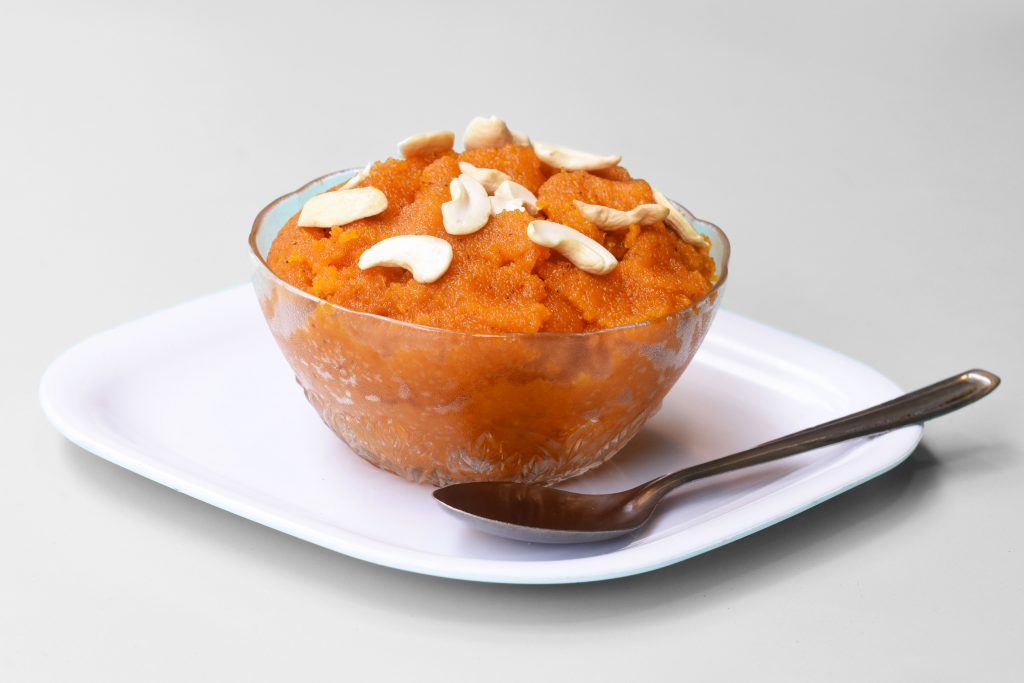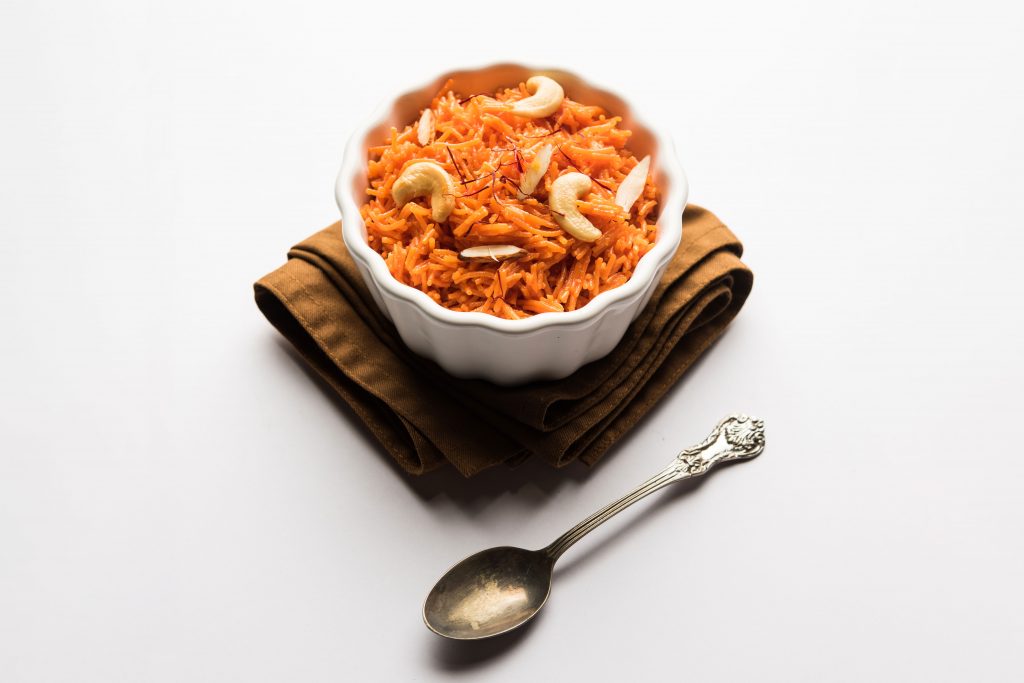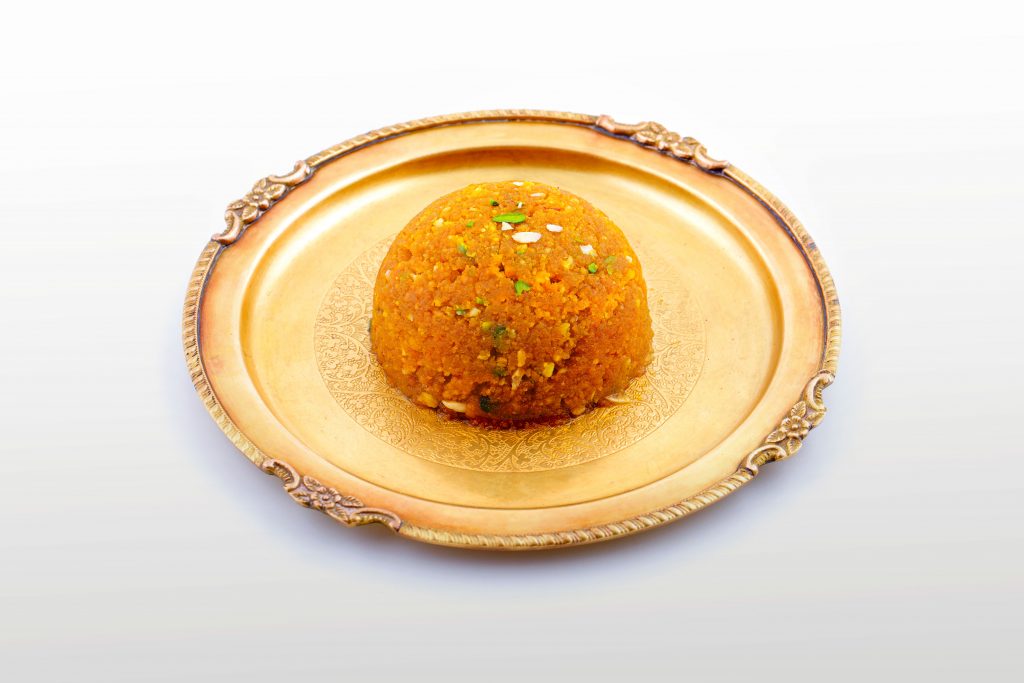Indians take great pride in representing recipes passed down from one generation to the next. We are comforted by traditions that connect us to our previous generations. We love to recreate recipes of specialty foods like halwa for our own families on major occasions that we once grew up eating.
What is Halwa?
Halwa is a specialty Indian mithai. The word Halwa originated from an Arabic word “hulw” which means “sweet”. Halwa (also known as halva) is a type of confectionery originating from Persia. It is widely popular in Asia, the Balkans, Caucasus, and Africa.
Halwa can be described as a dense pudding-like dessert made with ghee, jaggery, and other main ingredients such as semolina (suji), lentil (chana dal), or vegetables (carrots or bottle gourd). The taste of halwa is described as “homely”, “rich” and “wholesome”.
Making halwa is a lengthy process as it is slow cooked on a stovetop until thick and creamy. Unlike other mithai, halwa is eaten with a spoon. This delicious and fragrant dessert can be served hot or cold. As halwa is a specialty dessert, it can be spotted being served during Holi, Diwali, Raksha Bandhan, and all major Indian festivals.
Halwa is an important part of Indian cuisine and is found everywhere in India with different regional variations. We have compiled a list of three widely popular types of halwas.
1. Suji Halwa

Also known as sheera or sheero. This is one of the most beloved and classic halwas. Suji (semolina) halwa is perhaps one of the easiest to make as it’s made within minutes. Suji is toasted until golden brown and added into a sugar syrup and topped with nuts. It is served as prasad (a religious blessing) after Hindu temple events. It is also served with breakfast item like chola bhature. We strongly recommend trying our easy recipe below at your next brunch party. It is guaranteed to leave your family and friends talking about it for days to come.
2. Gajar Halwa

In Hindi, gajar means carrots. A quintessential winter delight and the ultimate comfort halwa. Gajar halwa originated in Punjab. Bright orange in color, this Indian pudding is made by slow-cooking grated carrots in ghee, milk, sugar, and cardamom. Before serving, it is topped with chopped nuts and khoya or mawa (dried evaporated milk solids).
3. Chana Dal Halwa

Adding lentils to dessert might sound unconventional. However, the result is guaranteed to be finger-licking delicious. First, chana dal is soaked overnight. Chana dal is cooked with milk and made into a paste. The paste is slowly cooked with ghee, sugar, and cardamom powder and stirred to perfection. The process is time-consuming but worth the labor. Be sure to check out our popular foolproof and easy-to-follow Chana Dal Halwa recipe.
Other popular types of halwa include lauki (bottle gourd) halwa, pumpkin halwa, and atta (flour) halwa.
When most people speak of halwa, it brings them fond memories from their childhood. It is common in India to spend summer vacations at your grandparents’ house with all of your cousins and what many remember is the entire family getting together after dinner and enjoying halwa together. Be sure to try one of these scrumptious halwa listed above with your loved ones and create new traditions.
Below is our foolproof crowd pleasing Suji Halwa recipe:
Suji Halwa:
Ingredients:
1 cup sooji (semolina)
1 cup sugar
2 tbsp ghee
5 green cardamom
½ tsp of orange food color
Few saffron strands
6 to 8 sliced almonds
6 to 8 sliced pistachios
1 tsp of coconut
2 cups water
Instructions:
1) In a pan, add sugar, water, cardamom, saffron, and food color, and let it come to a boil.
2) In another pan, take suji and stir until golden brown.
3) Add ghee to the suji and saute for a couple of minutes.
4) Slowly add sugar syrup to the suji and mix well.
5) Let it cook for 5 to 7 minutes.
6) Place the halwa in a bowl.
7) Garnish with sliced almonds, pistachios, and coconut.